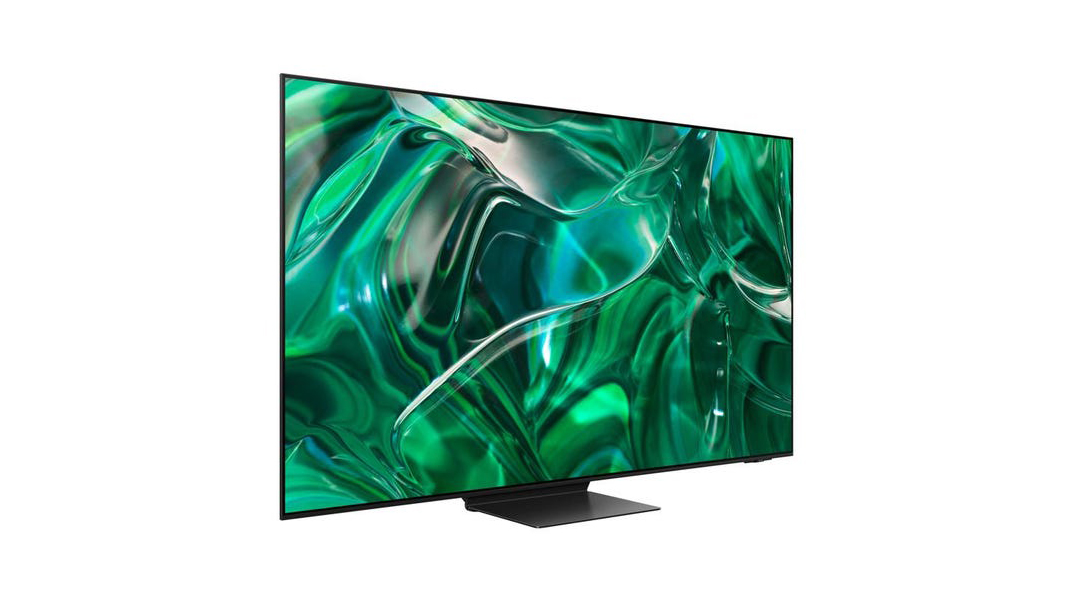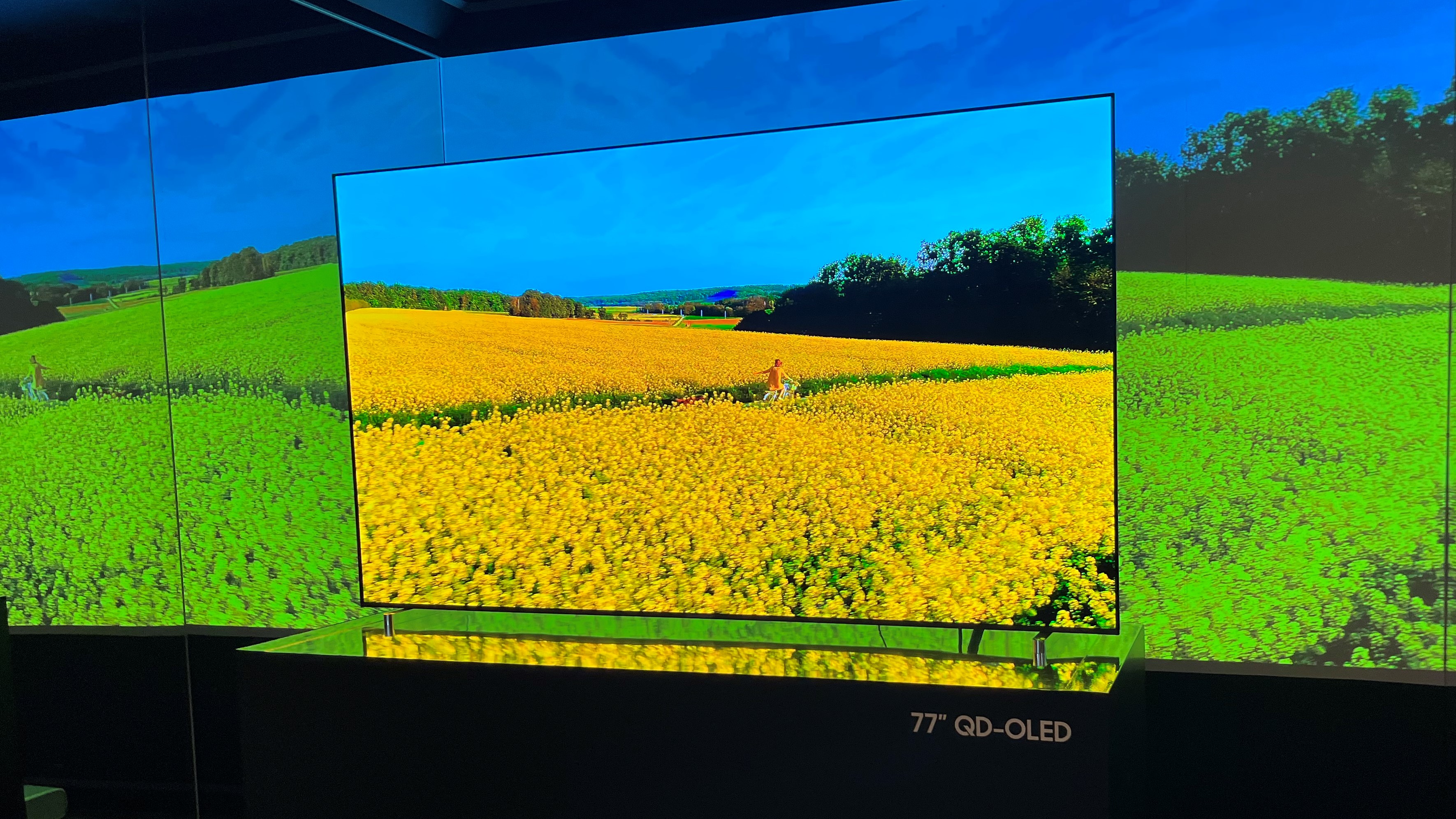Samsung S95C QD-OLED: everything you need to know
The Samsung S95C QD-OLED could be Samsung's brightest TV of 2023

The Samsung S95C QD-OLED TV is one of Samsung’s flagship TVs in 2023 and the OLED model to watch this year. In a TV market saturated with OLED ranges, it’s thrilling to usher in a screen that combines the best of OLED’s self-emissive brilliance with the brightness and color enhancement of quantum dot, or QLED.
The Samsung S95B that came before it delivered an impressive debut for the brand’s QD-OLED technology. Fast-forward to 2023, and the Samsung S95C will have to out-do its predecessor to ensure it gains a foothold amongst so many OLEDs – even if it has plenty of other mini-LED and micro-LED releases coming up, too.
We first encountered the Samsung S95C QD-OLED TV at CES 2023, calling it “the best TV” we’d seen at the tech expo. In this guide, we’ve collected together everything we’ve learned so far and what we expect from this QD-OLED successor.
Samsung S95C QD-OLED: Price and release date
The Samsung S95C will likely be released halfway through 2023 (the previous model launched in June 2022). You can see last year’s model pricing below, too. However, it’s normal for a new range to drop in price as the technology is scaled, but it may be too early to expect any less than these prices:
- 55-inch: $1,799 / £1,999 / around AU$2,700
- 65-inch: $2,799 / £2,999 / around AU$4,200
Samsung has also unveiled a 77-inch version of the upcoming Samsung S95C QD-OLED screen, which will cost more than the S95B’s 65-inch screen – possibly around $3,799 / £3,999 / AU$5,500, though it’s hard to tell precisely until we get official figures.
There will also be a cheaper QD-OLED model in Samsung's line-up this year: the Samsung S90C. It has some pared-back features compared to the S95C, but still promises brighter-than-average OLED pictures.

Samsung S95C QD-OLED: Design and features – what’s new?
The Samsung S95C is the next evolution in the company’s QD-OLED TV lineup. It utilizes the same bedrock of combined TV technologies, mixing up an OLED panel with a quantum dot filter.
Sign up for breaking news, reviews, opinion, top tech deals, and more.
Given that OLED panels are self-emissive, meaning they don’t require a backlight, it’s possible to turn pixels off entirely, creating those ‘deep blacks’ that OLED TVs are known for and causing an ‘infinite’ contrast ratio between light and dark areas of the screen.
Quantum dot filters boost color and contrast and are also commonly found in Samsung’s non-OLED screens. But the combination helps to utilize both technologies’ strengths, and Samsung claims that the S95C improves things even further with “unrivaled brightness, vivid color mapping and smart 4K upscaling with AI detail restoration.”
In this 2023 model, Samsung says that brightness has been boosted by 30% over the previous iteration – to a whopping 2,000 nits peak brightness, which is far above what’s usually found in an OLED screen. That’s due to a new Quantum HDR OLED Plus algorithm that tweaks light output via individual pixels for an exceptional level of brightness control.
There’s a host of gaming specifications, including the kind of 0.1ms response time typical of OLED screens, a top-tier 144Hz refresh rate (an improvement on the S95B’s 120Hz) and VRR/ALLM support. There’s also 4K streaming for the cloud gaming service Nvidia GeForce Now (a world first, we’re told) alongside support for Xbox cloud gaming, Amazon Luna, and Utomik.
The S95C’s 4.2.2 channel speaker system is also more advanced than we’d expect on a standard 55-inch OLED – by comparison, the LG C3 OLED makes do with a 3.1.2 system, and last year’s S95B was only 2.2.2 – with top-firing drivers to give its Dolby Atmos compatibility that extra boost. Unlike some competitors, though, there’s no DTS:X support in this range, and cinephiles may mourn the continued absence of Dolby Vision HDR.
A separate, similar Samsung S90C model is also coming out this year – effectively the same TV, but with integrated connections instead of the Samsung One Connect Box cable solution that comes with the S95C. The S90C also seems to use a slightly less advanced brightness algorithm, likely more akin to last year’s S95B model.

Samsung S95C QD-OLED: What do we think so far?
As the biggest TV seller worldwide, it’s unsurprising that Samsung is firing on all cylinders to offer various picture solutions. So whether you’re angling for its brightness-enhanced OLEDs, a top-range mini-LED, or the finally-small-enough-for-your-house micro-LED range, there’s a way for you to get exceptional picture quality into your home.
The brightness boost seen in the S95C is its most important feature – banishing talk of dim OLEDs for good – and we expect the price to be reasonable for what you get. But one of our (relatively few) complaints in our S95B review was how attentively you need to adjust the TV’s settings to get a perfect picture, and we’re hoping the S95C gets things right a little quicker out of the box this time around.
If you want more info, we've got a guide on whether you should buy a Samsung OLED TV.

Henry is a freelance technology journalist, and former News & Features Editor for TechRadar, where he specialized in home entertainment gadgets such as TVs, projectors, soundbars, and smart speakers. Other bylines include Edge, T3, iMore, GamesRadar, NBC News, Healthline, and The Times.